If you’re looking for a low-maintenance, fast-growing, and incredibly forgiving houseplant, the pothos (Epipremnum aureum) is a perfect choice. Known for its trailing vines and heart-shaped leaves, pothos is beloved by both beginners and seasoned plant parents alike. Not only is it easy to grow, but it also purifies the air and adds a lush, tropical vibe to any indoor space.
In this comprehensive guide, we’ll cover everything you need to know about caring for a pothos plant successfully — from choosing the right environment and watering schedule to propagation tips and dealing with common problems.
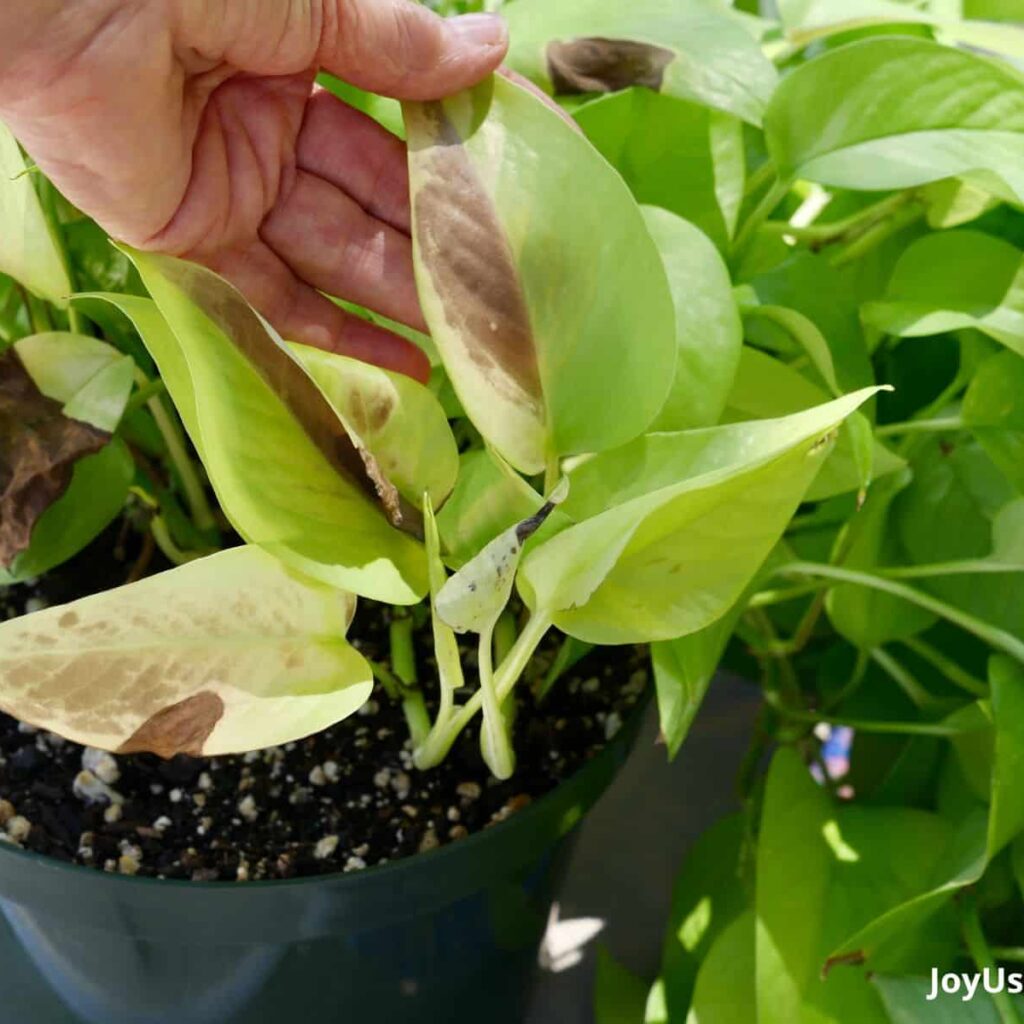
What is a Pothos Plant?
Before diving into care tips, let’s get to know this plant a little better. Pothos, often called Devil’s Ivy, is a tropical vine native to the Solomon Islands. It’s one of the most popular houseplants worldwide thanks to its attractive foliage and adaptability. The plant comes in several stunning varieties, including:
- Golden Pothos: Green leaves with golden-yellow variegation.
- Marble Queen: White and green marbled leaves.
- Neon Pothos: Bright, chartreuse-green leaves.
- Jade Pothos: Solid deep green leaves.
Pothos can be grown in hanging baskets, trailing from shelves, or even trained to climb a trellis or moss pole.
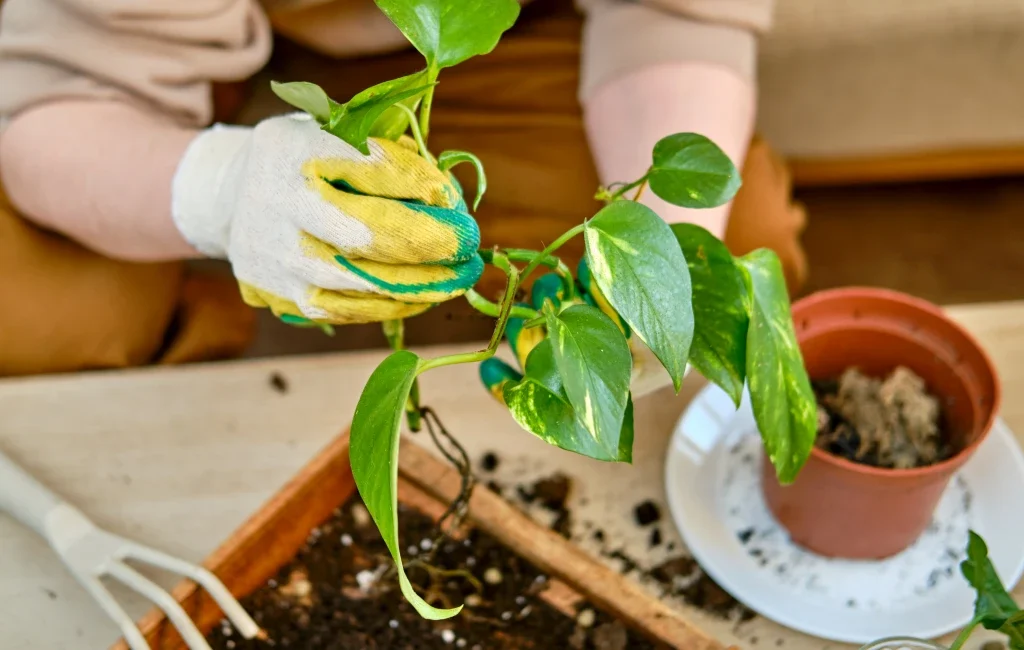
Ideal Environment for Pothos
One of the main reasons pothos are so easy to care for is their adaptability. However, providing an ideal environment will help your plant truly thrive.
Light Requirements
Pothos prefer bright, indirect light but can tolerate low-light conditions, making them ideal for offices, bedrooms, and bathrooms. Direct sunlight can scorch their leaves, while too little light may cause variegated varieties to lose their unique coloring.
Tip: If your pothos leaves turn pale or the variegation fades, it’s a sign your plant may need more light.
Temperature and Humidity
Pothos are tropical plants and flourish in temperatures between 65°F to 85°F (18°C to 29°C). They can survive in slightly cooler environments but are sensitive to cold drafts and sudden temperature drops.
While they tolerate average indoor humidity, pothos love slightly higher humidity levels. Placing your plant in a bathroom or kitchen, or misting it occasionally, can encourage lush growth.
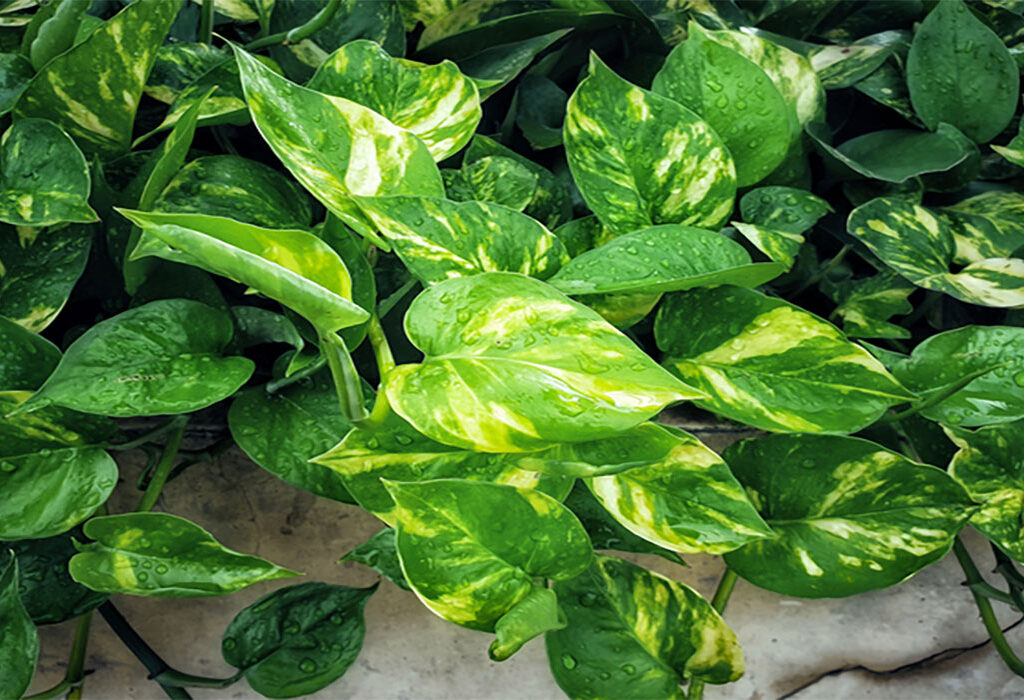
How to Water a Pothos
Proper watering is key to pothos care, and it’s better to underwater than overwater these plants.
When to Water
Let the top 1-2 inches of soil dry out before watering. You can test this by sticking your finger into the soil or using a moisture meter. Pothos are susceptible to root rot if left sitting in waterlogged soil.
How to Water
- Water thoroughly until it drains out of the bottom of the pot.
- Discard any excess water from saucers to prevent root rot.
- Reduce watering frequency during the winter months when plant growth slows.
Tip: If your pothos leaves start to droop, it’s often a sign that it needs water — though it will usually perk up quickly after a drink.
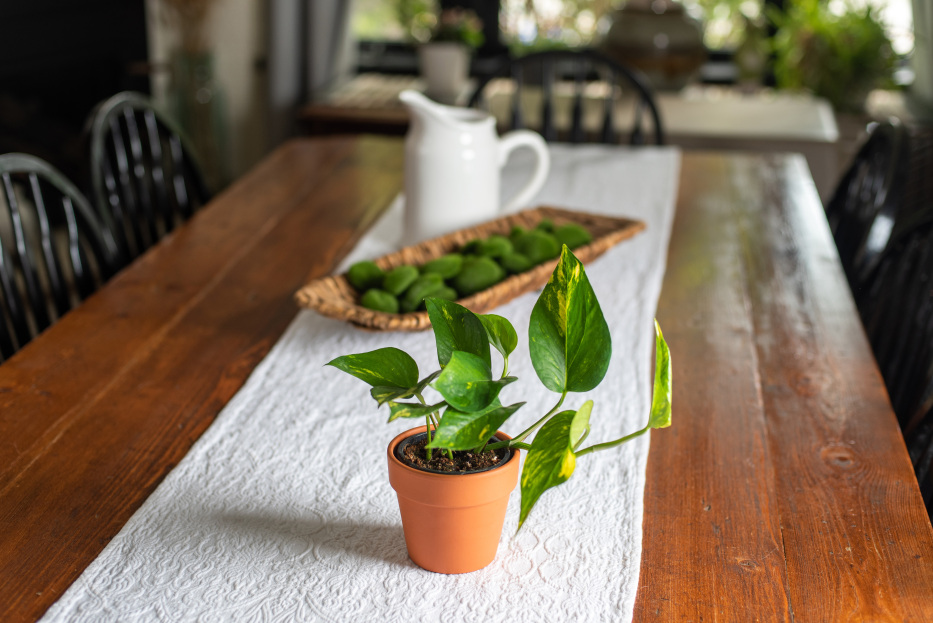
Choosing the Right Soil and Pot
Pothos aren’t picky about soil but do best in a well-draining, peat-based potting mix. A mix designed for indoor plants or one containing perlite or orchid bark for extra aeration is ideal.
Always choose a pot with drainage holes to prevent excess moisture from accumulating at the bottom.
Fertilizing Your Pothos
While pothos can survive without frequent feeding, regular fertilizing encourages vigorous growth.
- Use a balanced, water-soluble houseplant fertilizer (like a 10-10-10 or 20-20-20 formula).
- Feed your pothos every 4-6 weeks during the growing season (spring through early fall).
- Reduce or stop fertilizing during winter when plant growth slows.
Over-fertilizing can cause salt buildup in the soil and damage the plant’s roots, so always follow package instructions.
Pruning and Training Your Pothos
Pruning helps maintain your pothos’s shape, encourages fuller growth, and prevents it from becoming too leggy.
When and How to Prune
- Use clean, sharp scissors or pruning shears.
- Trim stems just above a leaf node (the point where a leaf attaches to the vine).
- Remove any yellowing, dead, or damaged leaves to keep the plant healthy.
Tip: Pruned vines can be propagated easily to create new plants!
Propagating Pothos
One of the joys of owning a pothos is how easy it is to propagate. You can multiply your plant collection or share cuttings with friends.
Steps to Propagate Pothos in Water
- Cut a vine below a node (the small bump where leaves and aerial roots form).
- Remove the leaf closest to the cut end.
- Place the cutting in a jar of clean water, ensuring the node is submerged.
- Place the jar in a bright, indirect light.
- Change the water every few days.
- Once roots grow 2-3 inches long, transfer the cutting to soil.
Pothos can also be propagated directly in soil, though water propagation is a fun and visible way to watch the roots develop.
Common Pothos Problems and Solutions
Even though pothos are hardy plants, they can occasionally run into problems. Here’s how to identify and fix them:
| Problem | Symptoms | Solution |
|---|---|---|
| Overwatering | Yellowing leaves, mushy stems, wilting | Allow soil to dry out; repot if necessary |
| Underwatering | Drooping, dry or crispy leaves | Water thoroughly and regularly |
| Pests (Spider mites, mealybugs) | Webbing, sticky residue, tiny insects | Wipe leaves with insecticidal soap or neem oil |
| Loss of Variegation | Leaves turn solid green | Move to a brighter location |
| Leggy Growth | Long, bare stems | Prune back to encourage bushier growth |
Is Pothos Toxic to Pets?
Yes — while pothos is safe for handling, it’s considered toxic to cats, dogs, and humans if ingested. It contains calcium oxalate crystals, which can cause irritation, vomiting, and difficulty swallowing. Always keep pothos out of reach of curious pets and children.
Fun Styling Ideas for Your Pothos
Pothos plants are incredibly versatile and can be styled in various ways to enhance your home décor:
- Hanging baskets: Let the vines cascade gracefully.
- Macrame plant hangers: Add a bohemian touch.
- Mounted on a moss pole: Train vines upward for a vertical display.
- Trailing from a shelf: Soften sharp corners and add greenery to empty spaces.
- Water propagation displays: Showcase cuttings in glass jars or vases.
Final Thoughts
Caring for a pothos plant successfully doesn’t require a green thumb — just a little attention to light, water, and occasional pruning. These adaptable, fast-growing vines are perfect for beginners and plant lovers alike, offering endless possibilities for decorating your home while improving indoor air quality.
Whether you grow them in hanging baskets, train them up a moss pole, or propagate them into new plants, pothos will reward you with their lush, trailing foliage for years to come.

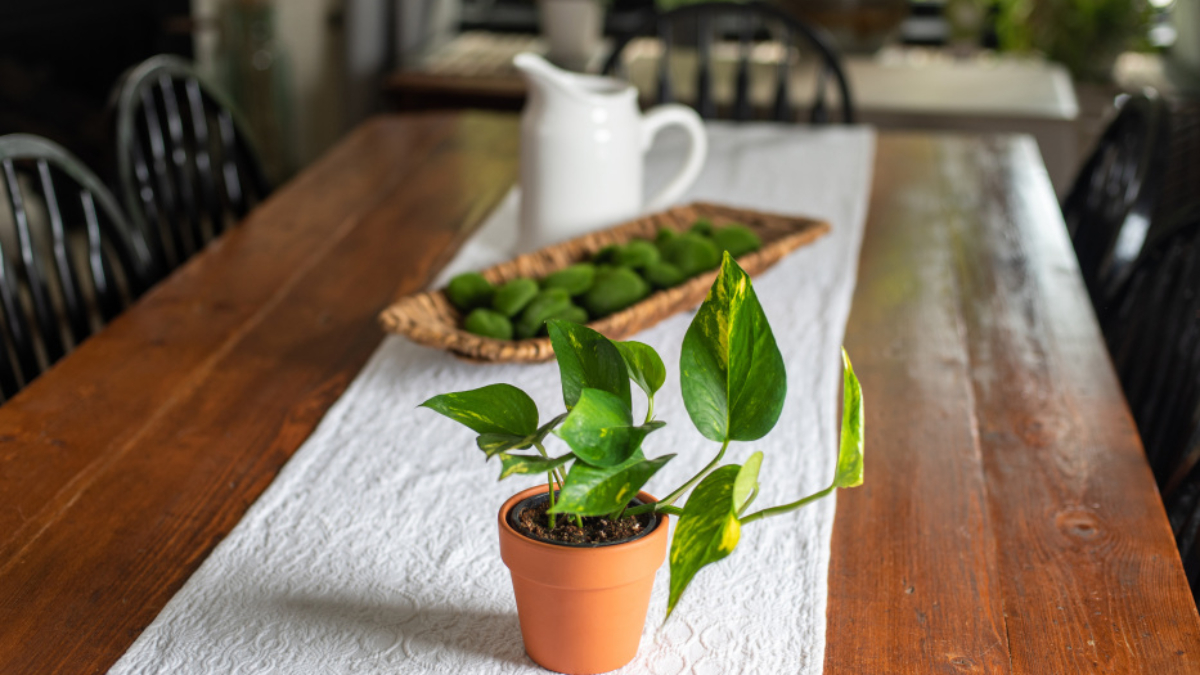




Leave A Comment